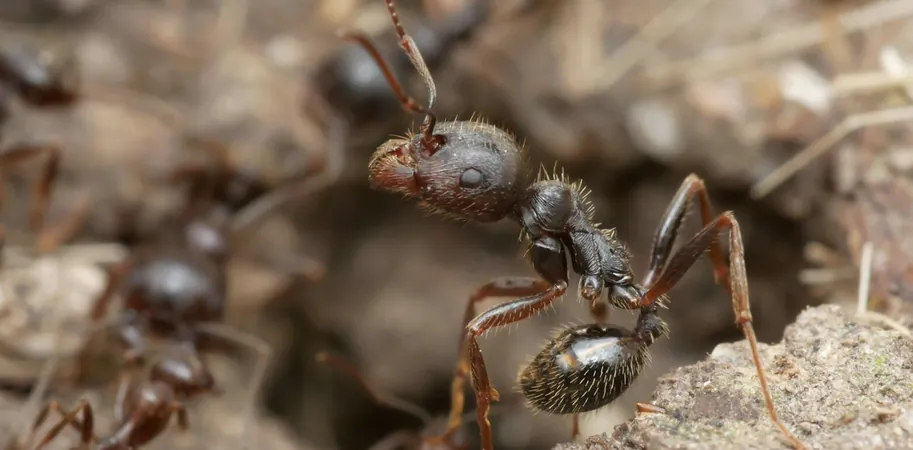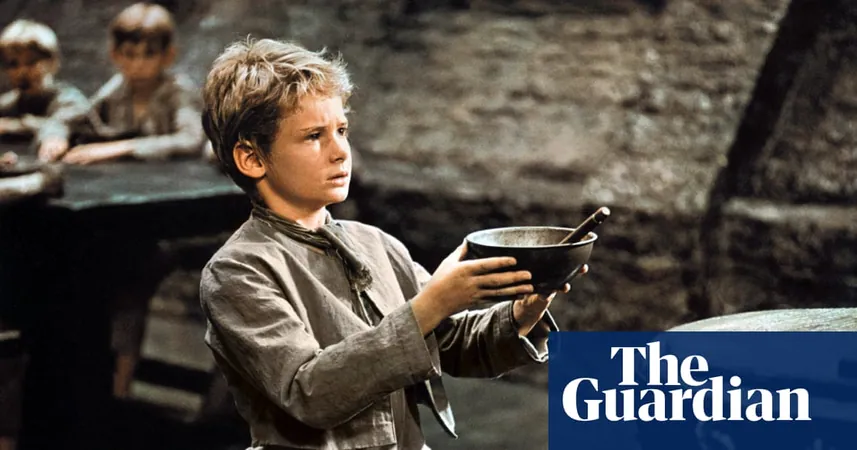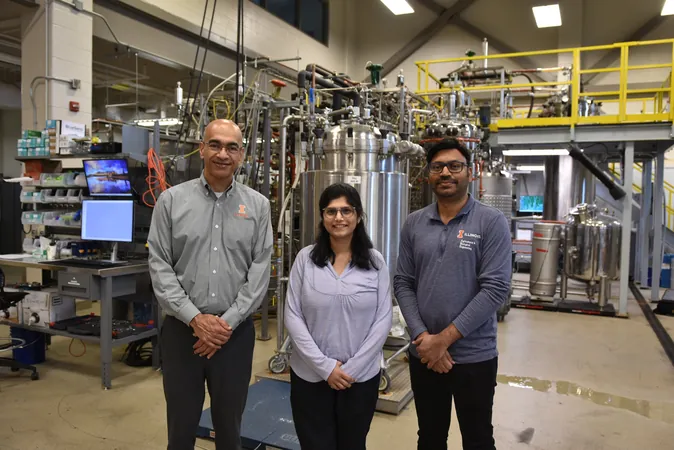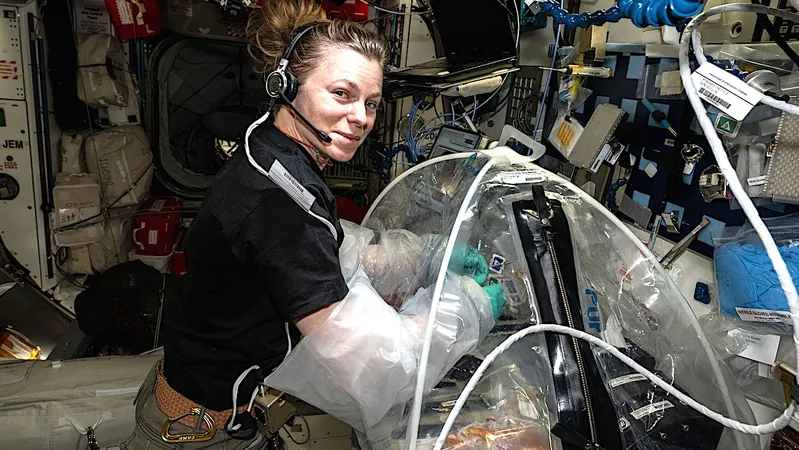
One Queen Ant, Two Species: A Shocking Discovery Redefines Family in Nature
2025-09-05
Author: Amelia
A Mind-Blowing Ant Family Dynamic
Imagine a world where a mother can have children from two distinct species—family gatherings would be a spectacle! In the realm of insects, this isn’t just a crazy thought; it's a groundbreaking reality. A recent study in *Nature* has revealed that queens of the Iberian harvester ant (*Messor ibericus*) regularly lay eggs not only from their own mates but also from males of another species, *Messor structor*.
Introducing 'Xenoparity': A New Reproductive Phenomenon
Researchers have coined a compelling new term for this outrageous reproductive behavior: xenoparity, which means 'foreign birth.' This discovery challenges our traditional understanding of 'species' and represents the first documented instance of this form of reproduction in the animal kingdom.
Typical Reproduction vs. The Ant Exception
In nature, it’s standard for a mother and father of the same species to breed, producing offspring that are identical in species. Yet, social insects like ants often break this mold. A notable study from 1999 highlighted that 17 out of 164 Central European ant species are known to produce hybrids.
Ant Reproduction Basics: A World of Workers and Queens
In typical ant colonies, fertilized eggs develop into workers and queens, while unfertilized eggs turn into males. The worker ants, which are all female, do the foraging and colony maintenance but cannot reproduce. In mating seasons, males emerge with wings, mate with queens, and often perish shortly afterward.
Parthenogenesis: A Surprising Ant Strategy
Interestingly, some ant species reproduce via parthenogenesis, allowing unfertilized eggs to develop into female clones of their mothers. Furthermore, colonies may feature one or more queens mating with single or multiple males, creating a diverse genetic landscape.
The Astonishing New Discovery
This new study reveals a stunning insight: the Iberian harvester queens, much like the seed harvester ants of the Southwestern U.S., are incapable of producing their own female workers. Instead, they require sperm from *M. structor* to lay eggs resulting in hybrid female workers. However, these queens also produce standard male offspring from their own species—sons that are clones of their fathers.
Evolution's Radical Reengineering
The impressive twist? Iberian harvester queens essentially act as 'rental wombs.' This mirrors a unique form of cloning seen in certain clams and stick insects. Researchers have sequenced DNA from hundreds of Iberian harvester ants, confirming this striking reproductive pattern. Despite sharing a common ancestor millions of years ago, *M. ibericus* and *M. structor* have diverged significantly.
Genetic Oddities and Sperm Parasitism Explained
The cloned sons raised in *M. ibericus* colonies exhibit genetic differences and peculiar appearances, even looking quite odd compared to their wild counterparts. The likely origin of this reproductive strategy is known as sperm parasitism, whereby females utilize the sperm of males from other species to stimulate asexual reproduction, integrating some genetic material into their offspring. Over time, these queens may have phased out the need for live *M. structor* males, creating their own brood of cloned males.
Evolution Knows No Boundaries
This astonishing revelation illustrates that evolution can radically transform reproduction in unexpected ways. Contrary to the conventional belief that nature adheres strictly to defined paths, this queen ant case reminds us that complexity and cross-species interactions are part of the evolutionary landscape. So, the next time you encounter ants marching along a path, remember there's a queen in southern Europe managing a two-species household—a reminder that nature has its own baffling rules.









 Brasil (PT)
Brasil (PT)
 Canada (EN)
Canada (EN)
 Chile (ES)
Chile (ES)
 Česko (CS)
Česko (CS)
 대한민국 (KO)
대한민국 (KO)
 España (ES)
España (ES)
 France (FR)
France (FR)
 Hong Kong (EN)
Hong Kong (EN)
 Italia (IT)
Italia (IT)
 日本 (JA)
日本 (JA)
 Magyarország (HU)
Magyarország (HU)
 Norge (NO)
Norge (NO)
 Polska (PL)
Polska (PL)
 Schweiz (DE)
Schweiz (DE)
 Singapore (EN)
Singapore (EN)
 Sverige (SV)
Sverige (SV)
 Suomi (FI)
Suomi (FI)
 Türkiye (TR)
Türkiye (TR)
 الإمارات العربية المتحدة (AR)
الإمارات العربية المتحدة (AR)